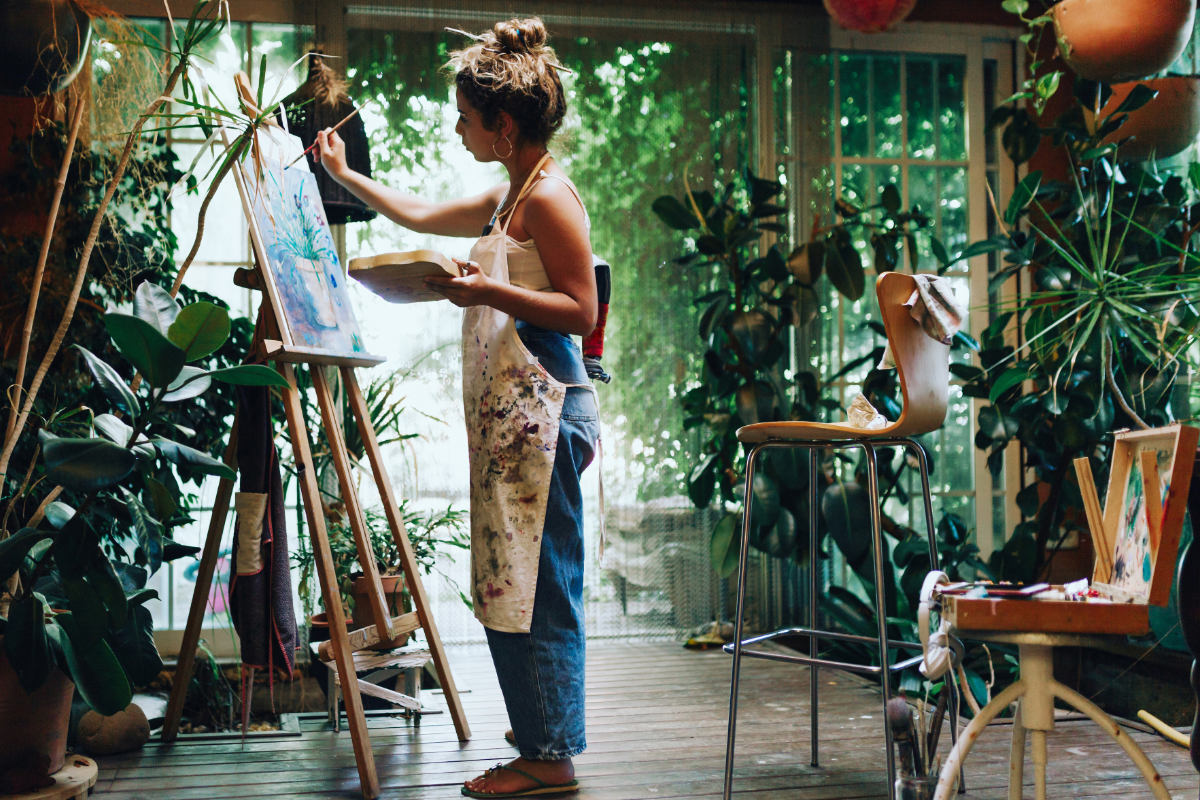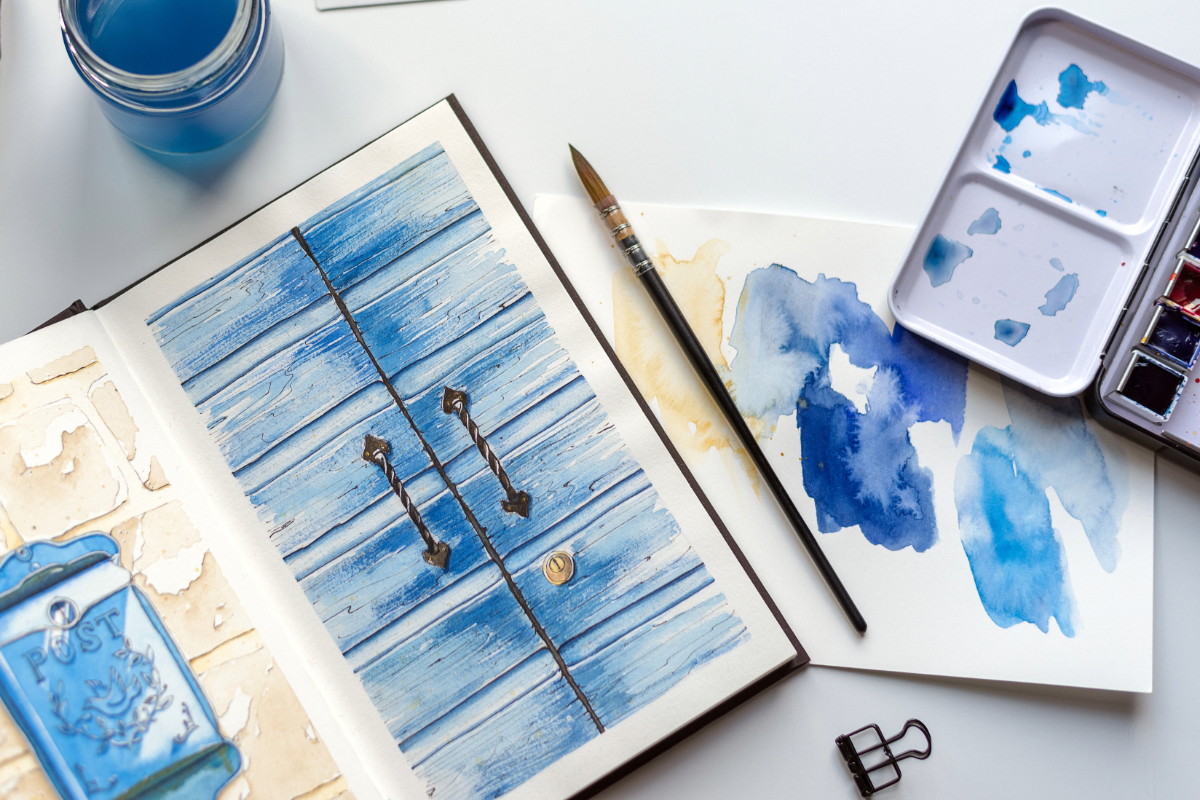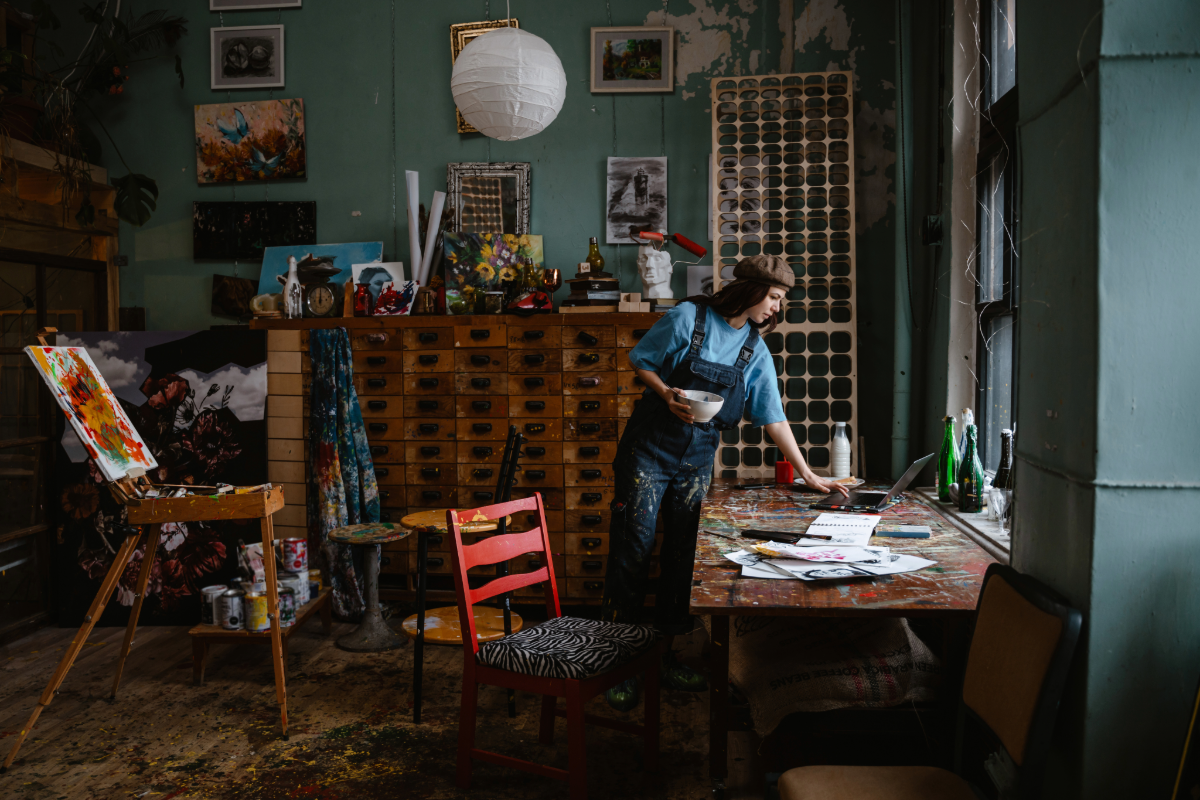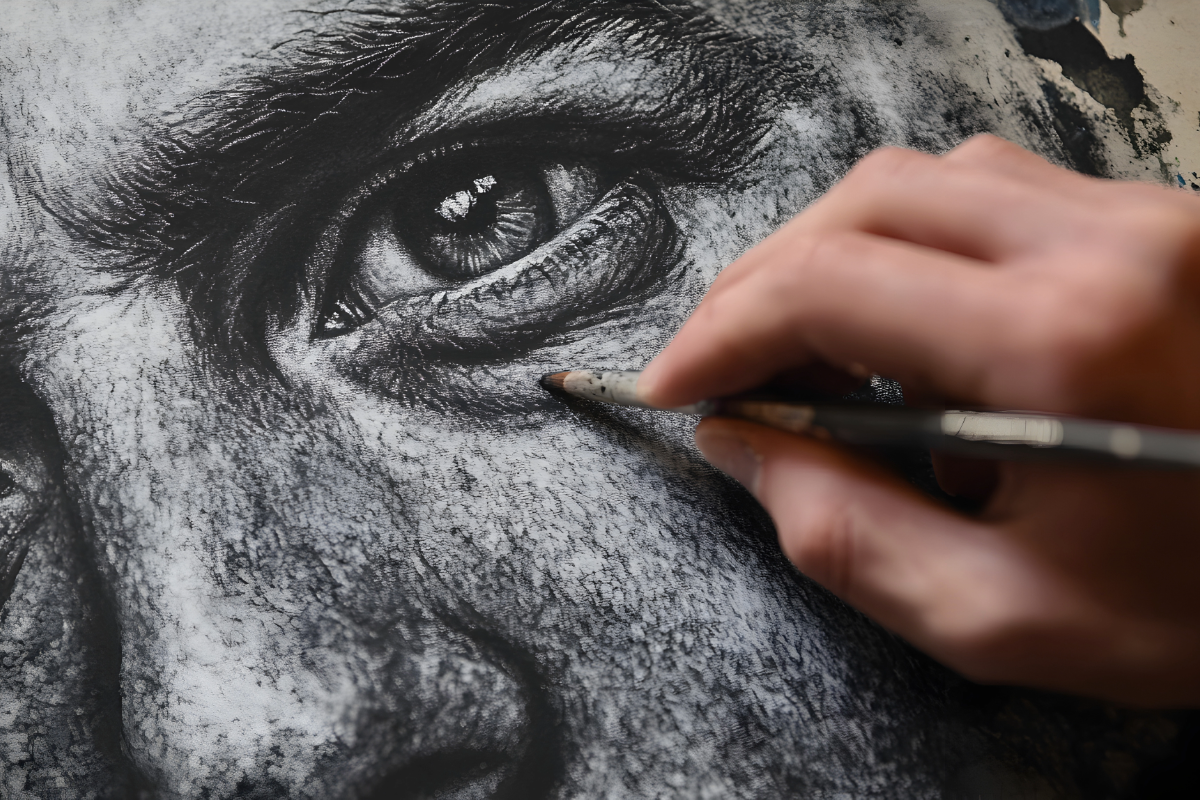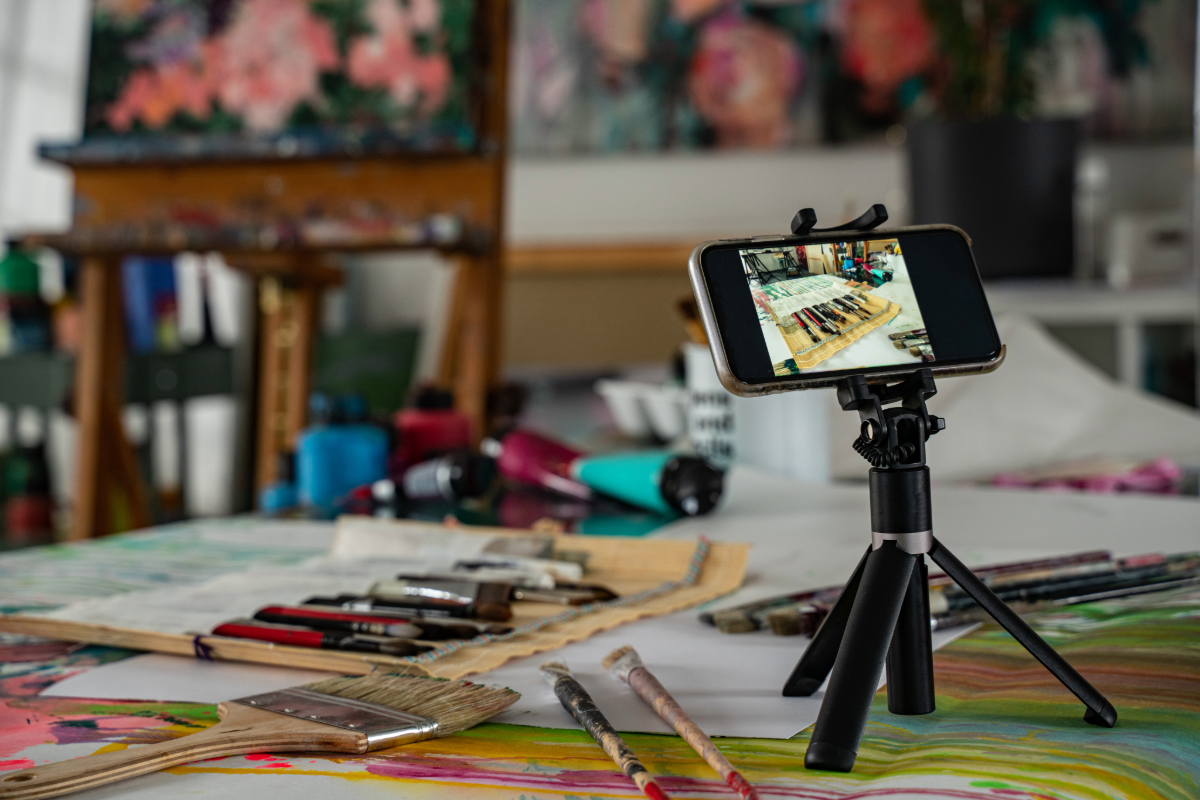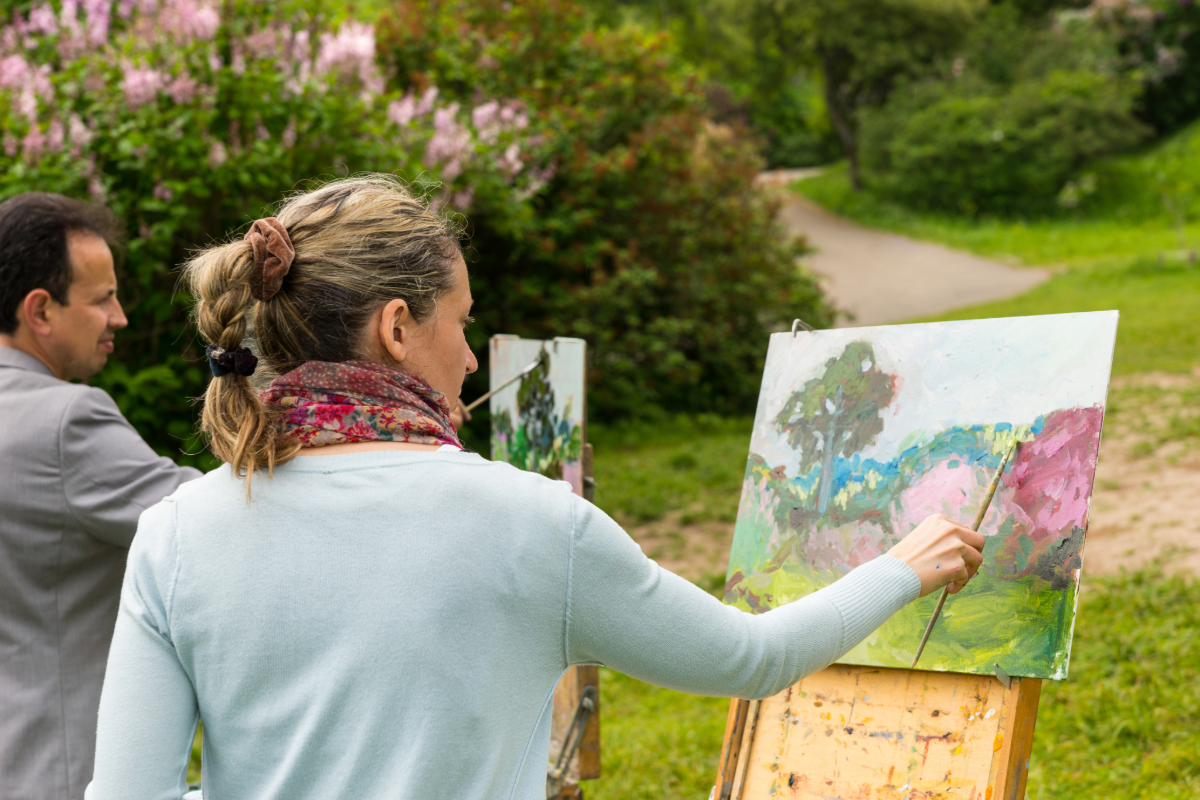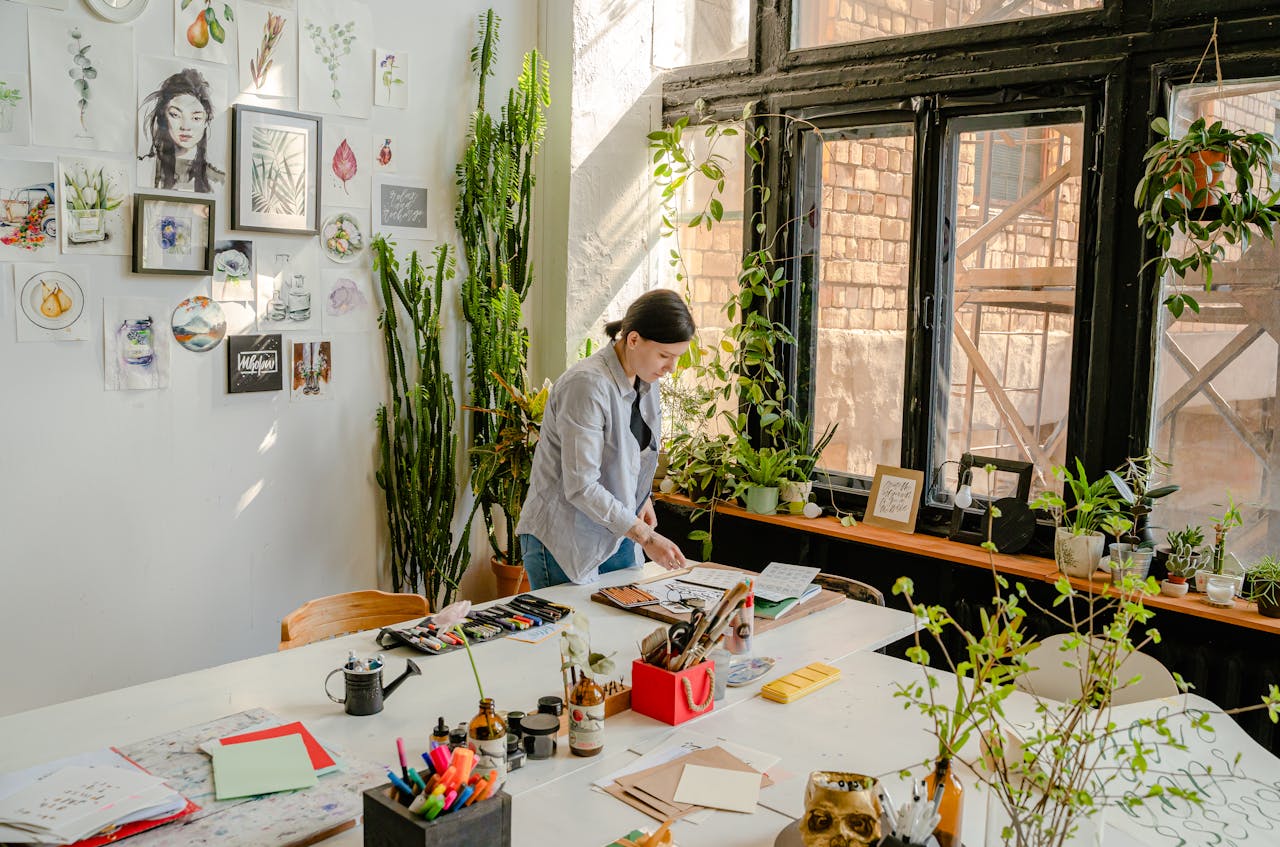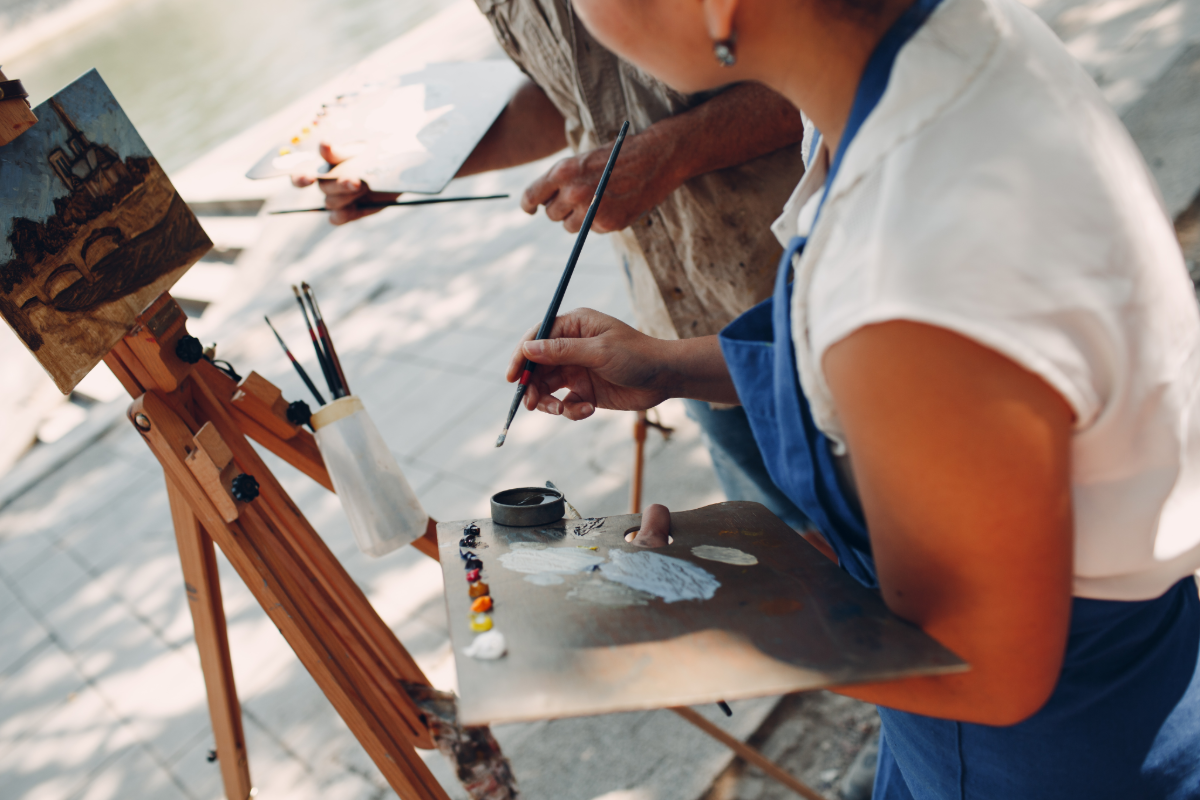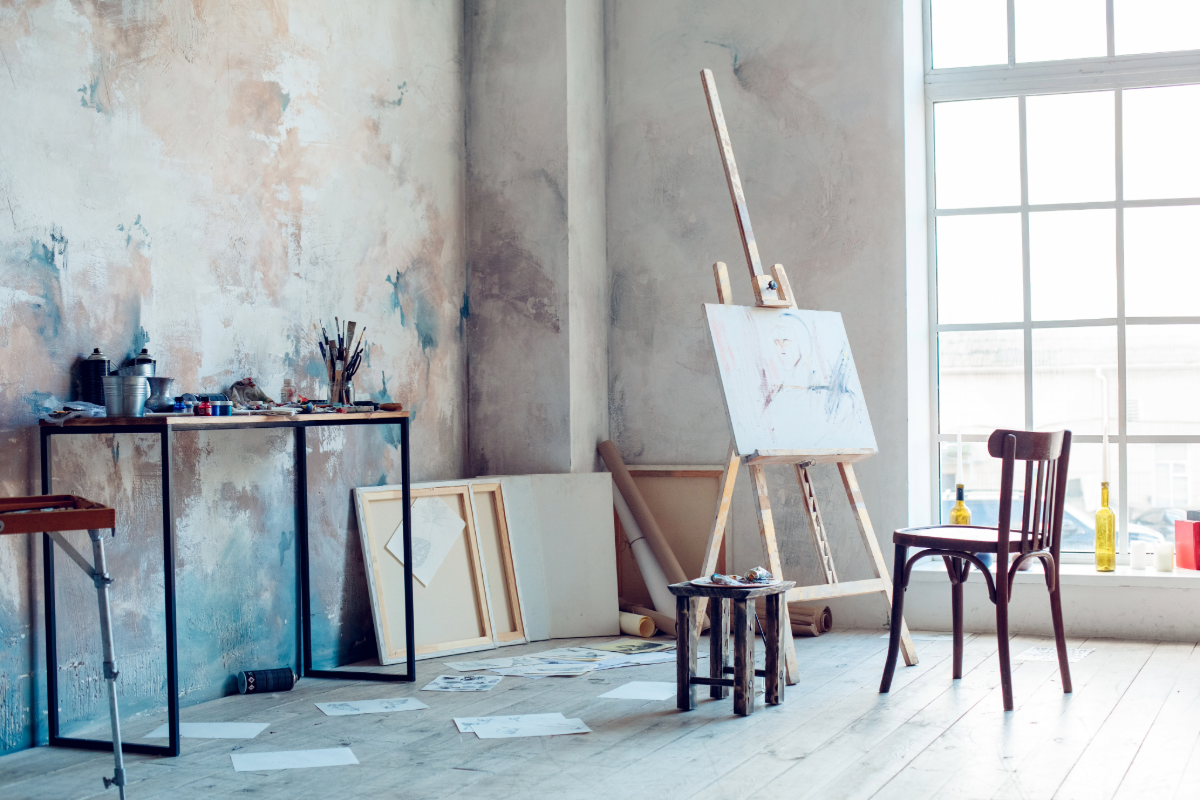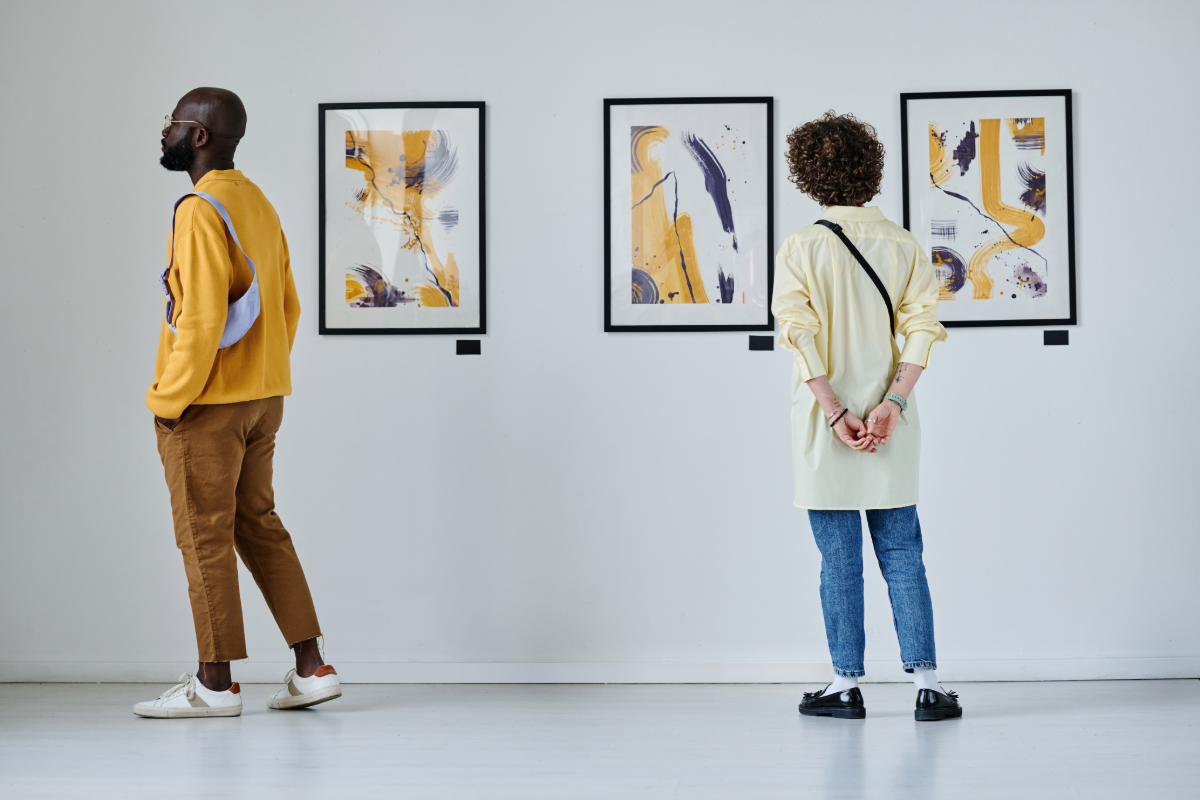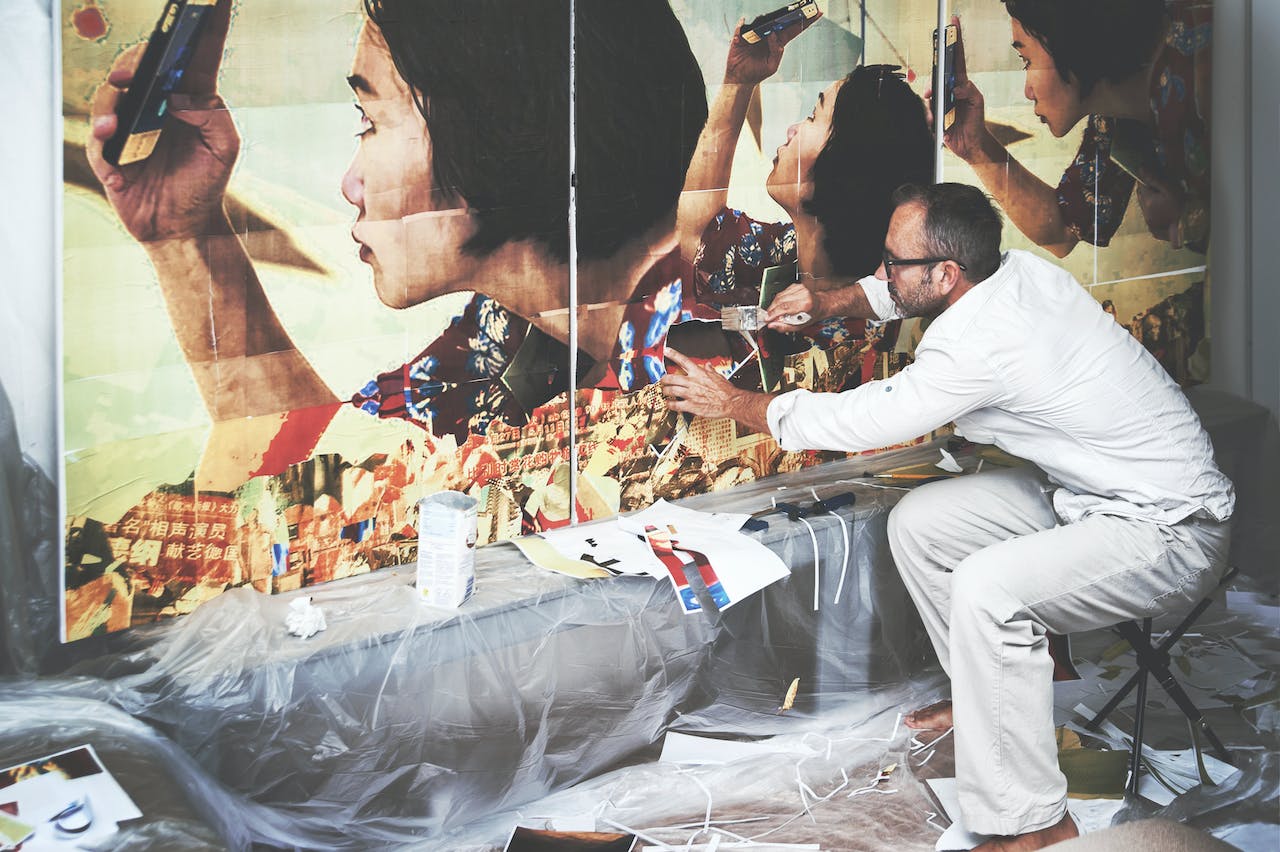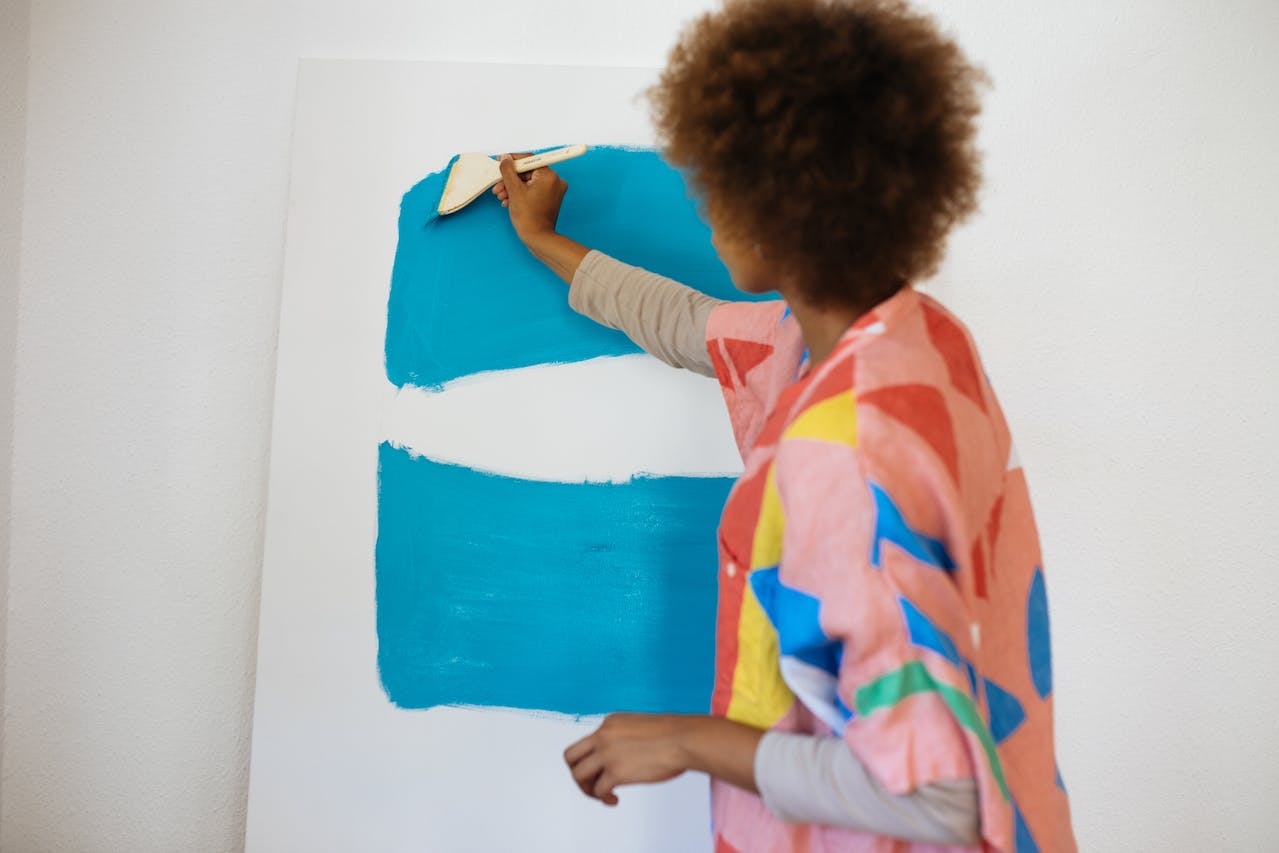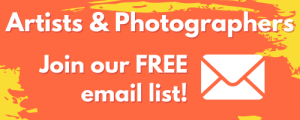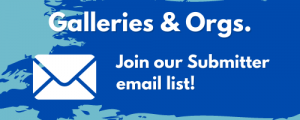The Artist’s Blueprint – 10 Questions to Build a Thriving Career
Thriving as an artist requires a delicate balance between creative passion and business savvy. While getting lost in the beauty of creation is easy, today’s competitive market demands a strategic approach and consistent dedication. This comprehensive guide by TheArtList explores ten essential questions every artist should consider to nurture their craft and business, laying the foundation for a fulfilling and successful artistic journey.
Grab a pen and paper, and let’s embark on this journey together!
1. Do I Consistently Work on My Craft?
Beyond initial inspiration, consistent practice is the cornerstone of artistic growth. It’s about refining your skills, experimenting with new techniques, and developing a unique artistic voice. Here are some ways to make practice a habit:
- Daily Rituals: Establish a dedicated practice time, even if it’s just for a short period each day. Consistency is key!
- Creative Challenges: Push your boundaries by participating in creative challenges or exploring new mediums.
- Seek Feedback: Get valuable insights and identify areas for improvement by asking for feedback from peers, mentors, or online communities.
🎨 Related: How to Embrace Feedback with Confidence (and Grace!)
2. What is My Artistic Voice or Niche?
Your artistic voice is your unique selling proposition. It’s the distinctive style, themes, and perspectives that make your work stand out. Identifying your niche helps you connect with a specific audience and build your brand.
- Self-Reflection: Explore your personal experiences, values, and inspirations to uncover the core themes that resonate with you.
- Research: Analyze the work of artists you admire to identify commonalities and differences in their styles.
- Experimentation: Don’t be afraid to try new things! Experimentation can lead to unexpected discoveries and help you refine your artistic voice.
🎨 Related: Artist Branding 101: How to Stand Out in the Crowded Art World
3. Do I Know My Target Audience?
Understanding your target audience is crucial for effective marketing and sales. Knowing who you’re creating for allows you to tailor your messaging and promotional efforts to resonate with their interests and needs.
- Buyer Personas: Develop detailed profiles of your ideal customers, including their demographics, interests, and desires.
- Market Research: Identify where your target audience spends their time online and offline.
- Customer Feedback: Engage with your audience through social media, email, or surveys to gather their valuable insights.
4. Am I Actively Seeking Opportunities?
Growth doesn’t happen in isolation. To advance your career as an artist or photographer, actively seek out opportunities that will help you grow both creatively and financially.
- Networking: Connect with other artists, galleries, and industry professionals to expand your network and learn about new opportunities. Attend local art shows, industry events, or connect online. Networking can open doors to collaborations, exhibitions, and commissions.
- Social Media: Embrace social media as a powerful tool to showcase your work to a global audience. Regularly post your art, engage with followers, and connect with potential clients. Building your personal brand and attracting attention can lead to exciting possibilities!
- TheArtList.com: Finding consistent income and exhibition opportunities is critical for sustaining your artistic practice. TheArtList.com is the leading online hub for artists and photographers seeking income and exhibition opportunities. It’s a dedicated platform that connects you with the right people and propels your career forward! Whether you’re looking for open calls, competitions, grants, or residencies, TheArtList can help.
🎨 Related: Unlocking Income Opportunities for Visual Artists and Photographers
5. Am I Continuously Learning?
The art world is constantly evolving, and so must you as an artist and business owner. Whether it’s new techniques, emerging technologies, or evolving trends in the industry, staying up-to-date is essential for maintaining a competitive edge. Learning should be a lifelong pursuit for every artist who wants to grow both creatively and professionally.
- Workshops and Classes: Attending workshops and classes is one of the most effective ways to learn new skills and expand your artistic knowledge. Whether it’s mastering a new medium, honing your business acumen, or diving into a specialized technique, in-person or virtual classes can provide you with fresh insights and hands-on experience. Don’t hesitate to seek out experts in the field who can challenge and inspire you. Investing time in your education ensures that your creative practice remains innovative and dynamic.
- Online Resources: In today’s digital age, learning opportunities are literally at your fingertips. Explore online tutorials, artist blogs, YouTube channels, and forums where professionals and hobbyists alike share their expertise. These resources can be invaluable for discovering new techniques, experimenting with tools, or even understanding industry best practices. Platforms like TheArtList also feature informative blog posts and guides to help you keep pace with the latest trends in the art world.
- Mentorship: Mentorship is a powerful way to grow as both an artist and a business owner. Experienced artists or mentors can offer invaluable advice, helping you navigate challenges, set goals, and develop strategies for your career. Whether it’s through a formal mentorship program or an informal relationship, seeking guidance from someone who has been where you are can accelerate your progress and prevent common pitfalls. Surrounding yourself with a support system of like-minded individuals can keep you motivated, inspired, and always learning.
- Stay Curious: At its core, continuous learning is about staying curious and open to new ideas. The more you explore and embrace new challenges, the more your art and career will thrive. Whether it’s experimenting with a new technique, learning about art history, or studying market trends, growth happens when you push beyond your comfort zone.
6. How Am I Promoting My Work?
Creating exceptional art is just the beginning. Effective promotion is crucial for reaching a wider audience, generating sales, and establishing a sustainable career. Here are just a few essential strategies to market your art and build a strong artist brand:
- Professional Website: A professional portfolio website is your online gallery. It should feature high-quality images, organized by category or project, to present your art in its best light. Include an artist statement and bio that share your creative journey and inspiration, allowing visitors to connect with your vision. Make sure your contact information is prominent, allowing potential buyers or collaborators to easily reach out.
- A Social Media Presence: Consistency is key on social media. Whether you’re using platforms like Instagram, Facebook, Tik-Tok, or YouTube, regularly post updates about your work, including behind-the-scenes glimpses or insights into your creative process, to engage your audience. Interaction is equally important. Respond to comments, follow other artists, and participate in conversations to build community and relationships. Use relevant hashtags and write engaging captions to expand your reach and increase post engagement.
- Email Marketing: Building an email list is a powerful way to connect directly with collectors and potential clients. Encourage website or social media visitors to subscribe for updates. Send regular newsletters featuring new work, upcoming exhibitions, and exclusive content. Consider early access to new pieces or special discounts to keep subscribers engaged and valued.
- Collaborate: Partnering with other artists, brands, or galleries can significantly expand your reach. Collaborate on joint projects, limited-edition pieces, or exhibitions. These partnerships introduce your work to new audiences, provide fresh perspectives, and enhance your visibility within the art world.
- Gain Media Attention: Prepare a press kit with professional images, a detailed bio, and recent exhibition highlights to share with journalists or bloggers. Actively pitch your story to relevant media outlets, focusing on what makes your art and journey unique. Features, interviews, or even influencer shout-outs can generate buzz and attract new audiences.
- Seek Exposure: Exhibiting your work in physical or virtual galleries is an effective way to gain exposure. Whether it’s local shows, national exhibitions, or international art fairs, these opportunities allow you to connect with galleries, collectors, and other artists. Utilize TheArtList.com to discover exhibition opportunities, grants, and competitions to get your work seen by the right people.
- Print & Merchandise: Offering diversified products alongside original artwork can attract a wider audience. Consider creating limited-edition prints, postcards, or even merchandise featuring your work. A range of price points makes your art more accessible and opens up additional revenue streams, without diminishing the value of your original pieces.
🎨 Related: Art Marketing on a Budget: Free and Low-Cost Strategies for Maximum Reach
7. Is My Pricing Reflecting the Value of My Work?
Pricing your art appropriately is essential for financial sustainability. Your prices should reflect the time, materials, and skill invested in each piece, while also considering market trends and your target audience’s budget.
- Cost Analysis: Calculate the cost of materials, labor, and overhead expenses for each piece.
- Market Research: Analyze the pricing of similar artworks by other artists.
- Value Proposition: Clearly articulate the value your art offers to potential buyers.
🎨 Related: How to Price Your Artwork
8. Do I Have a Business Plan?
A well-crafted business plan serves as a roadmap for your artistic career. It helps you set goals, manage your finances, and track your progress.
- Goals and Objectives: Start by defining your short-term and long-term goals. These could include securing gallery representation, increasing your art sales, launching a new collection, or achieving a specific income level. Setting measurable objectives will give you a clear direction, allowing you to assess your progress and adjust your efforts accordingly.
- Marketing Strategy: Your marketing plan is essential for reaching your audience and promoting your work. Identify your target market—whether it’s art collectors, interior designers, or the general public—and outline the channels you’ll use to reach them, such as social media, email marketing, or art fairs. Make sure to budget for promotional activities, such as paid advertising or exhibition fees, to ensure your efforts align with your financial resources.
- Financial Projections: Understanding the financial aspect of your art business is crucial for sustainability. Develop a financial forecast that includes your estimated income from art sales, commissions, or grants, along with a breakdown of your expected expenses, such as materials, marketing, and exhibition fees. Regularly reviewing and adjusting these projections will help you manage your cash flow and ensure profitability as you grow your career.
9. Am I Managing My Finances Effectively?
As an artist in the business, it’s essential to have a solid understanding of your finances. Tracking your income, expenses, and taxes ensures that you can make informed decisions and avoid financial pitfalls.
- Record Keeping: Keep accurate records of your income, expenses, and tax deductions.
- Financial Planning: Develop a financial plan to set goals for your business.
- Accounting Software: Consider using accounting software or hiring a professional accountant to manage your finances.
10. Am I Balancing My Artistic Vision with Business Demands?
While it’s important to create art that you love, you must also consider the commercial aspects of your business. Striking a balance between your artistic vision and market demands can help you achieve long-term success.
- Market Research: Stay informed about current trends and preferences in the art market.
- Customer Feedback: Pay attention to feedback from collectors and galleries to understand what resonates with your audience.
- Flexibility: Be open to adapting your creative approach to meet the needs of the market while remaining true to your core values.
Next Steps
By asking yourself these ten essential questions, you can gain valuable insights into your creative practice and business strategy. Remember, growth is a continuous process, and self-reflection is key to identifying areas for improvement. By actively addressing these questions and taking proactive steps to implement changes, you can position yourself for success as both an artist and a business owner.
TheArtList: Your Partner in Artistic Success
At TheArtList, we’re passionate about helping artists thrive in their careers. We offer a wealth of resources to fuel your artistic journey, from informative blog posts like this one, to open calls and competitions that can propel your work into the spotlight.
Subscribe to our Artist & Photographer Mailing List so you won’t miss any upcoming blog posts, monthly newsletters featuring our Artist of the Month contest winners, and art calls delivered straight to your inbox.
And if you’re an art gallery, museum, or organization looking to promote your art calls, contests, exhibitions, or events, subscribe to our Submitter Mailing List. You’ll receive our monthly newsletter showcasing some remarkable up-and-coming talent, along with occasional discounts on our promotional packages.



